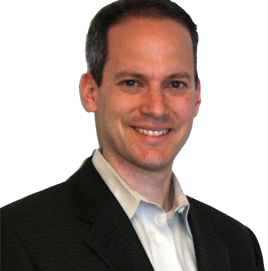
Managers have been struggling to maximize employee productivity almost since the beginning of time. Shelves full of books exist on the subject. Magazines and online articles try to tackle the problem on a daily basis. High-priced consultants, experts, and speakers add to the mass of productivity-improvement tips. Could there possibly be an easy answer?
In SuccessFactors‘ world, there is. The San Mateo, CA-based company provides scalable talent management software that helps companies track, review, profile, compensate, and manage their employees more effectively. The company provides a variety of on-demand solutions for every size of company, from startups to “mega-businesses” with 20,000+ employees.
If you’re not sure whether software can actually cure age-old management woes, just ask the market. Last year, Deloitte put SuccessFactors on its Fast 50 list of fastest-growing software and IT companies. That’s because the company experienced 1,437% between fiscal years 2003-2007. Clearly, something is working.
Business Pundit caught up with SuccessFactors VP of Product Marketing David Karel to find out more about the company’s views on employee performance, company efficiency, and how SuccessFactors itself has attained such, well, success.
BP: What are 2-3 of the biggest pitfalls that all companies face in terms of productivity? How do your products address those pitfalls?
1. Companies are unable to bridge the strategy/execution gap.
In many organizations, there’s a gap between the overall company strategy and day-to-day execution in the organization. Why? Because execution hinges on a company’s ability to clearly communicate strategic goals throughout the entire organization, ensure everyone is aligned with those goals and enable line management to measure and manage performance of individual contributors at a tactical level in order to drive strategy on a daily basis. This gap gets increasingly larger as companies grow and executives are asked to do a lot more with a lot less.
SuccessFactors gives organizations the ability to easily set and communicate goals to literally every person in the organization (no matter how big or small), hold people accountable for progress against all goals and proactively address productivity and performance gaps as they occur.
2. Companies have a tough time hanging on to their best, most productive people.
Identifying, attracting and keeping top talent is a hot button for most executives because star performers vastly outperform the lower performers in an organization — by as much as 3 times according to research. Even in times as difficult as these, a company’s best people may leave if not given a reason to stick around. The war for talent has not ended; a company’s top performers are still being targeted by competition.
SuccessFactors gives companies the ability to hone in and identify high potential employees and provide them with leadership opportunities, development opportunities and stretch goals to keep them highly engaged. In tandem, we give them the tools to develop employees and reward them based on performance which can have a dramatic effect on both retention and bottom line business results.
3. Companies are not getting the most out of their workforce.
Every organization has a bell curve of performance across their workforce; the rule of thumb is that ten percent are leading the bell curve, 80 percent fall in the middle and about ten percent trail behind with the lowest performance. Not ideal at all. While companies often focus on nurturing their top talent — or fret about managing their low performers — imagine the impact on an organization that could do something to shift the performance curve of the “mass in the middle” even slightly to the right.
We help set clear goals and expectations, and we provide meaningful feedback. Plus, we help companies optimize their workforce with tools to develop and promote from within and make the right external hires when they must go to the outside – so companies can make sure key positions remain filled with the right person for the right job.
Currently, companies are spending about 70 percent of operating expenses on their people. Why should such an immense asset not be fully utilized? SuccessFactors helps provide ways to make better business decisions in today’s tough economy and we pride ourselves on giving our customers the tools to pull the most powerful levers they have to shift that curve to the right.

BP: Can you briefly describe the ideal “pay-for-performance” environment?
Ideally, a pay-for-performance culture takes root when:
1. Employees are given visibility into what really matters to the organization
2. Expectations are clearly set around how each employee is to make an impact
3. Everyone’s performance is compared against these expectations is then measured — always fairly and consistently.
4. Rewards in the form of raises, bonuses, etc. are then passed out based on real achievement.
5. Execution is the most important, and most often overlooked, part of running a successful business. Especially in the current environment, executives should use every tool at their disposal to make sure their company is running as a single machine and moving toward big-vision goals. This means ensuring each employee compensations, bonuses and so on are tied to performance, and SuccessFactors provides tools to do just that.

BP: How do your products and services ensure that a manager’s team is working at peak levels of efficiency 100% of the time?
In this environment, with many organizations forced to downsize or put a hold on hiring, managers are being asked to deliver a lot more with less. It’s quite the conundrum. Against this backdrop, team optimization is the key to survival. SuccessFactors’ suite of tools helps managers do just that by getting everyone focused on what matters most to the team, and to the organization at-large. Whether it is giving managers the solutions they need to both develop each employee to his or her full potential or making sure teams are fully engaged and motivated to give their most — everyday — SuccessFactors is there everyday to help companies achieve tangible and measurable results, lower costs, and align their organizations.
BP: SuccessFactors is doing really well as a company. How did the company grow so successful? How is it staying successful in a difficult economy?
Today, SuccessFactors is one of the fastest growing software company in the world — but it hasn’t been easy. In fact, SuccessFactors was born in 2001, during a challenging economic time in Silicon Valley, and we’ve battled every step of the way to rise from an unknown start-up to a market leader. We now boast a massive and growing 4.7 million strong user base with more than 2,600 customers in 185 countries — and we’re only getting started.
Since day one, SuccessFactors has been focused on customer success and our on-demand platform helps us do this quickly – getting customer-driven product evolution and frequent enhancements up-and-running when they need it. We also deliver innovative, customer-driven new features on an iterative monthly basis, allowing customers to continuously increase the value they receive from us. We also interact and work closely with our customers on a daily basis – a paradigm shift from the legacy, on-premise software sales model of selling multi-million dollar license deals and then reengaging the customer five years later.
How has this downturn changed our business? Now, our customers are pouring everything to keep their existing customers satisfied and do more with less. They’re doing that by putting increased focus on their top talent and high performers to make sure their employees are motivated and engaged. As a result, SuccessFactors has gone from a nice-to-have to a must-have in the arsenal of software solutions. That’s how we’re able to thrive in the downturn.
David Karel is the VP of Product Marketing at SuccessFactors. Learn more about SuccessFactors here.
